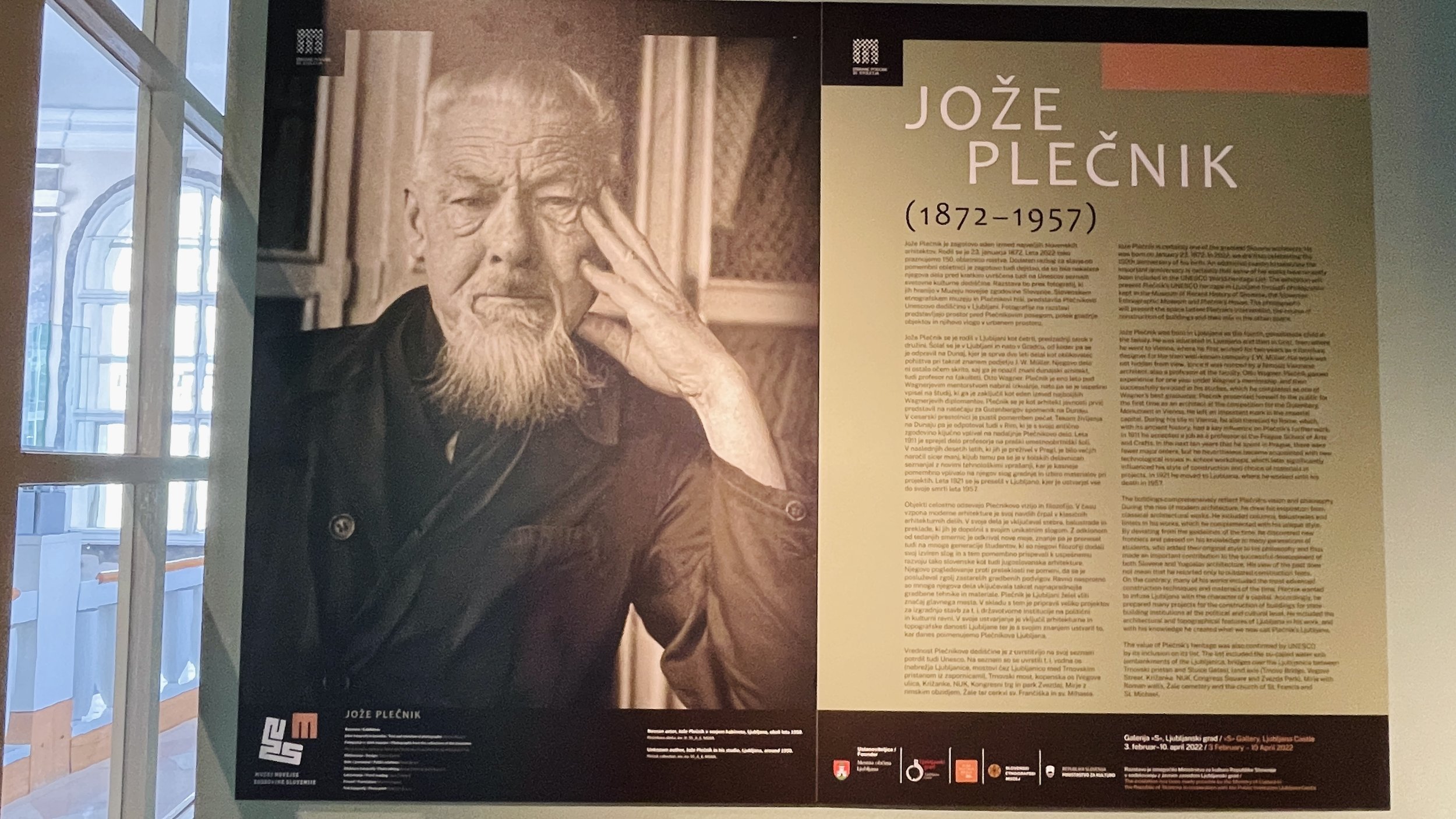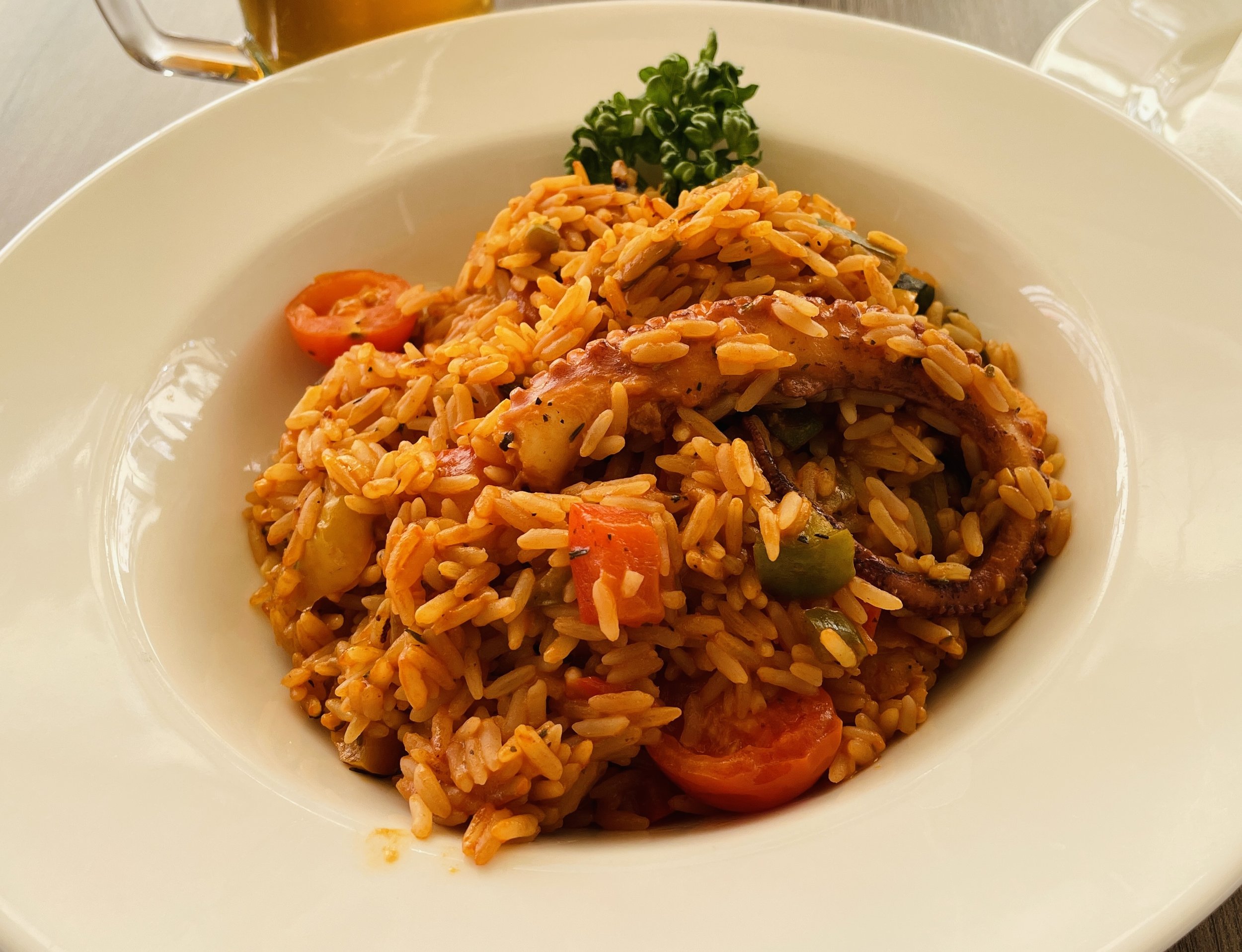The City of Jože Plečnik 普莱奇尼克
June 14, 2022
We went to the old town farmers market again and got some fresh cherries, strawberries, and apricots. Since it was the harvest season for cherries, strawberries, and apricots, the fruits were fresh and sweet. We might have had apricot a couple of times before, and we thought apricot peaches didn't taste much but not those apricots. Guess the fruit freshness made a big difference. We had a spinach roll from a nearby bakery for breakfast. After breakfast, on the way to Jože Plečnik's house, we saw a community garden on the road that reminded us of the joyful time we spent in our community garden back in Marion, Iowa, many years ago.
The modern Ljubljana city and Jože Plečnik, a Slovene architect, are inseparable. Plečnik had a significant impact on the contemporary architecture of Ljubljana. Wherever you go in the city, you will see some buildings he designed. Ljubljana was his city and Plečnik was the favorite son of Ljubljana. We had no idea who he was before this trip until yesterday during our city tour. Once we got the feel of his impact on the city, we decided to pay a visit to Plečnik's House, where he lived and worked after he returned to the city in 1921. We went there on a bus. We got there a few minutes passed the hour, and the guided tour had already started, but the staff in the museum was very kind and allowed us to join the tour, which was just having another American couple. The tour guide took us through Plečnik's house, a complex of two neighboring buildings, and showed us his furniture, house interior design, and the refurbishing he did. He was a workaholic and eccentric by the modern standard. Everything he designed in the house was to maximize his ability to work. He created a chair used in the dining room, not for comfort but designed it so uncomfortable that he would not sit in the chair for a long time doing nothing. He also thought meeting people was wasting time and did all he could to reduce the meeting time. He set up a tiny room in the house to meet the guest. The room was just large enough to have a small table with two chairs, making his guest so uncomfortable that they would leave after completing business. He had no restroom for his students or guests in his house to limit anyone's visiting time. So many things in the house seemed weird, but it allowed him to increase his productivity. He appreciated nature and the open garden. His friend built a church next to his house. They had a handshake agreement not to put a fence between the church and his house so people could enjoy his garden. That agreement is intact today. He designed the entrance door to the garden so narrow and short that he had to bow to the natural every time he entered the garden. He was a minimalist. The refurbishment and extension work on his house, as well as other projects in the city, was often done using leftover materials from Plečnik's other projects.
Before its independence in 1991, as part of Yugoslavia, Slovenia came under communist rule for the bulk of the post-World War II period. When we planned this trip, we were curious to see any traces left from the communist era. Tito, the head of the Yugoslavia communist party, was one of a few foreign leaders' names we knew about when we were kids. This afternoon, we visited the National Museum of Slovenia and the National Museum of Contemporary History of Slovenia. We only found a small exhibition about that period and not many things about Tito in the National Museum of Contemporary History of Slovenia. We were surprised as Jože Plečnik's exhibit took up much more space in the museums.












Tonight's dinner was traditional Slovenia cuisine at Gostilna Sokol. The two main entries were country feast and risotto with prawns and octopus, with the dessert of walnut rolls with honey. The food was delicious except for black sausage, which was made of rice and pig blood. The walnut rolls were excellent and not too sweet. After dinner, we hopped on the green tourist tram in the square, and it took us around the city for one hour to see more places, and the city tourist card covered it.











第二十五天:一清早上城中集市买回新鲜的樱桃,草莓和杏桃,相当不错。早餐之后去了设计大师约热·普莱奇尼克(Jože Plečnik)的故居,他完全就是一个工作狂。性格古怪,他设计的家和家具都是能让他有更多时间工作,故居值得一访。下午去了国家博物馆和现代历史博物馆,想看一些关于铁托的事,但博物馆里没有太多铁托的介绍和评价。晚上再次去品尝斯洛维尼亚特色菜。黑色香肠味道不怎么样,据说是猪肉,米和猪血做成的。甜点不错,不是很甜。饭后,又跳上绿色旅游车,带着我们在城里转一个多小时。明天又要换地方了。
















